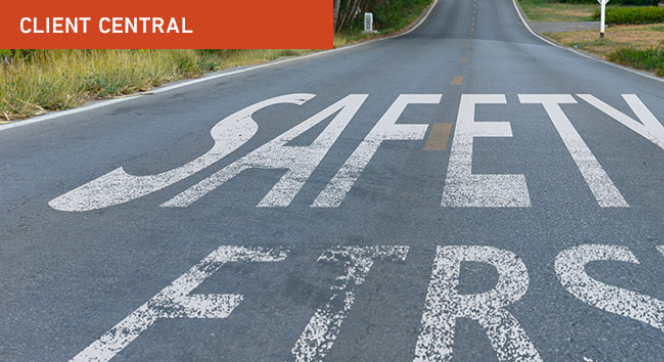There’s a lot more to human resources than benefits and time-off requests. The department plays a vital role in designing and weaving a company’s fabric — reflected in its mission to its workforce. In commercial transportation especially, human resources professionals can have a powerful influence on safety, touching everything from a company’s culture to reducing the number of work-related injuries employees experience.
Gina DeSorbo balances human resources and safety roles at Automated Food Service (AFS), a vending, coffee, and food service company in Boston, Mass. She described for Lytx five key ways the human resources function influences the organization to create positive results in safety.
1. Through recruitment and hiring practices
In commercial transportation, HR strives to hire successful candidates who show they’re committed to safety, DeSorbo said. By including questions about safety in interviews, employers can get a sense of a candidate’s views on safety. And by hiring drivers and managers who are committed to safety, a company can minimize the likelihood of on-the-job injuries and workers’ compensation claims, DeSorbo said. Employees, meanwhile, want to work for a company they believe is invested in their safety. In fact, a company’s stance on safety can give it a huge competitive edge when candidates believe a company will make their well-being a priority.
2. Through training
HR is responsible for ensuring employees receive the training they need to do their jobs well and safely. Training may relate to road safety, company procedures, operating equipment, or drivers having the proper licenses and qualifications, DeSorbo said.
According to a report from the Toronto-based Institute for Work & Health, employees in their first month on the job are three times more likely to have a lost-time injury than workers who have been at their jobs for more than a year. That statistic may have to do with workers feeling uncomfortable in their new roles, DeSorbo said — and it highlights the need for high-quality training from the get-go.
When DeSorbo onboards new drivers, she pairs them with a qualified trainer who has a safe driving record. “We sit down together and explain to drivers what they can expect — such as lots of bridges and tight spots — and what is expected of them,” she said. “That way, they’re on the same page and thoroughly prepared for the challenges they’ll encounter.”
3. Through performance management
HR initiatives such as reward and recognition programs built around a driver’s safety record can ensure that team members are fully invested in and motivated by safety, DeSorbo said. “Reward programs keep safety top of mind for drivers and can ensure that they will make it a priority,” she said. At AFS, DeSorbo is planning new ways to reward drivers for safe driving, whether with Red Sox tickets or gift cards.
4. Through company communications
By sharing safety messages through email, post-it notes, or signs in the break room, HR professionals can motivate employees and get them excited about safety, DeSorbo said. “Safety messages that are positive, fun, and encouraging can unify your team members and inspire them to think about safety regularly,” DeSorbo said. “They get everybody involved, generate excitement, and it will show in the results team members produce.”
5. By establishing company culture
“When a new employee joins your company, the face of someone in human resources is often the first face they see,” DeSorbo said. “If HR takes the lead on safety, others at the company will follow suit.”
It makes sense for HR to champion safety, DeSorbo added. After all, a strong safety record strengthens a company’s bottom line and contributes to a positive company culture. “When a company comes out of the gate and shows its staff that yes, their safety is important, employees feel valued,” DeSorbo said. “For example, when our drivers have a good day on the road, you can see it on their faces. They’re smiling, and you know — they’ve had a safe and productive day.”
To learn how your company can establish a strong safety program, read more here.
Never miss an issue of Best Fleet Forward, and subscribe to the monthly newsletter today.
